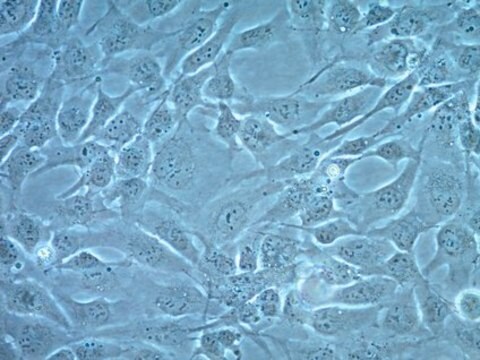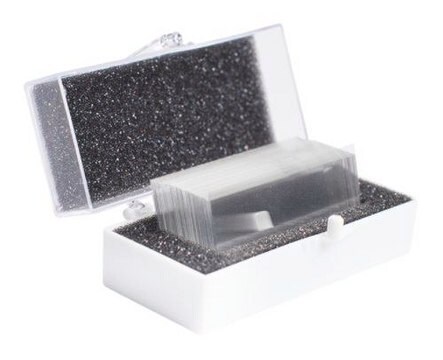SCC065
HL-1 Cardiac Muscle Cell Line
Mouse
Sinônimo(s):
HL-1 Cardiomyocyte Cell Line, HL-1 Atrial Muscle Cell Line
About This Item
Produtos recomendados
Nome do produto
HL-1 Cardiac Muscle Cell Line, HL-1 Cardiac Muscle Cell Line has been extensively characterized and is a valuable model system to address questions of cardiac biology at the cellular & molecular levels.
fonte biológica
mouse
Nível de qualidade
técnica(s)
cell based assay: suitable
cell culture | mammalian: suitable
Descrição geral
The HL-1 line was derived from AT-1 subcutaneous tumor excised from an adult female C57BL/6J mouse. The parental AT-1 line was originally derived from an atrial tumor growing in a transgenic mouse in which expression of the SV40 large T-antigen was targeted to atrial cardiomyocytes via the atrial natriuretic factor (ANF) promoter.
Descrição de linhagem celular
Aplicação
Cardiac
Cardiovascular Disease
Toxicity
Qualidade
• Cells tested negative for infectious diseases by the Mouse Essential CLEAR panel PCR panel by Charles River Animal Diagnostic Services.
• Cells are negative for mycoplasma contamination.
• Functional Assay: Fluo-8 calcium dye fluorescent based assay for detecting changes in intracellular calcium
Armazenamento e estabilidade
Exoneração de responsabilidade
This product contains genetically modified organisms (GMO). Within the EU GMOs are regulated by Directives 2001/18/EC and 2009/41/EC of the European Parliament and of the Council and their national implementation in the member States respectively. This legislation obliges {HCompany} to request certain information about you and the establishment where the GMOs are being handled. Click here for Enduser Declaration (EUD) Form.
Código de classe de armazenamento
12 - Non Combustible Liquids
Classe de risco de água (WGK)
WGK 2
Ponto de fulgor (°F)
Not applicable
Ponto de fulgor (°C)
Not applicable
Certificados de análise (COA)
Busque Certificados de análise (COA) digitando o Número do Lote do produto. Os números de lote e remessa podem ser encontrados no rótulo de um produto após a palavra “Lot” ou “Batch”.
Já possui este produto?
Encontre a documentação dos produtos que você adquiriu recentemente na biblioteca de documentos.
Nossa equipe de cientistas tem experiência em todas as áreas de pesquisa, incluindo Life Sciences, ciência de materiais, síntese química, cromatografia, química analítica e muitas outras.
Entre em contato com a assistência técnica








